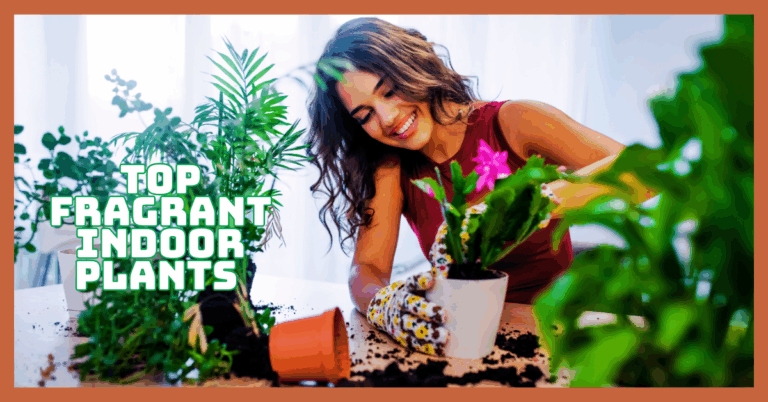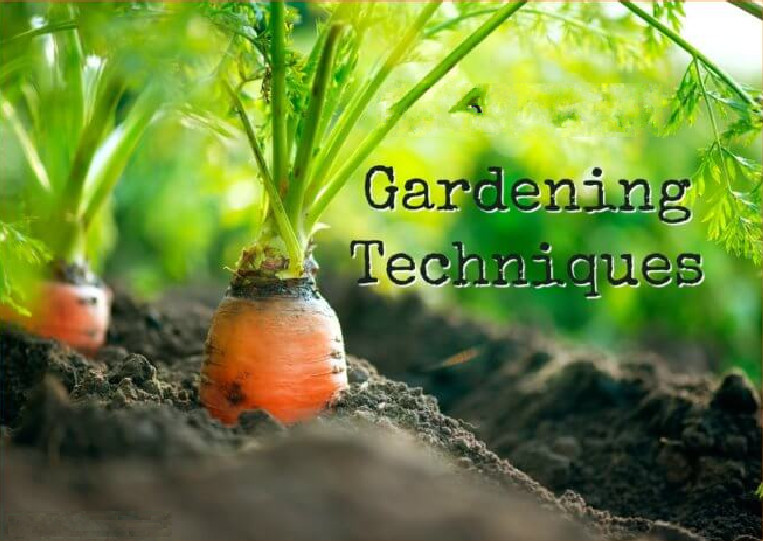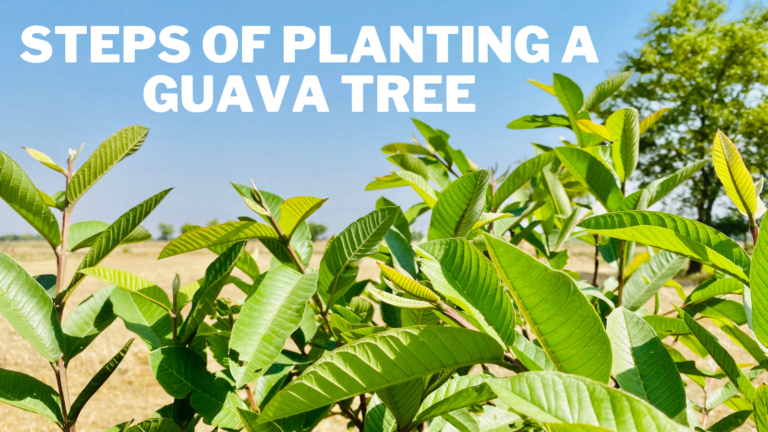Best Plants For Beginner Gardeners
Best Plants For Beginner Gardeners
Do you want to try gardening but aren't sure where to begin? In this blog post, you will learn about the best plants for beginner gardeners.
Sure, growing flowers and vegetables can be intimidating at first. Fortunately, there are a plethora of varieties that will thrive with little effort – no prior experience is required.
So, if you want to create flower-filled beds in your garden or enjoy eating a meal full of freshly grown vegetables, these ideas will help you get started.
We've compiled a list of the best plants for beginners with the help of experts. They're bound to bring joy to you, your garden, and your flowerbed ideas with silky-petaled cosmos, jolly radishes, structural alliums, and much more.
Continue reading to learn more about the best plants for beginner gardeners.
1. Catmint
Catmint is an excellent plant for beginner gardeners. Nepeta, also known as catmint, is a beautiful, hardy perennial. It's one of our best plants for beginners, particularly if you like our cottage garden ideas.
For purple-flowering ground cover along the edge of sunny borders, try the ‘Walker's Low‘ variety (although it does well in partial shade, too).
According to Raine Clarke-Wills of Raine Garden Design, it is undoubtedly the best plant for beginners.
She continues, “This invaluable plant gives so much back, not only to encourage wildlife but also to provide endless colour in the garden from May to December.”
Thanks to its aromatic, silvery-hued leaves, it has a pleasant fragrance. In the right conditions, each plant can spread to a width and height of around 50cm; it prefers well-drained chalk, loam, or sandy soils.
2. Eggplant
One of the first vegetables I was able to grow successfully was eggplant. It's simple to grow in a garden or a large container. It also enjoys warmth and sunlight.
If your plant produces an abundance of eggplants, like mine, and you're unsure what to do with them, check out this collection of over 85 eggplant recipes. You'll have no trouble finding something to eat with so many delicious options!
Would you like to get more information? You can find it in our guide: 9 Creative Ways To Grow Eggplants In Containers.
3. African Daisy
African daisies (also known as osteospermums) are another Sutton's expert recommendation. They are easy to grow and produce flowers for several months. As Suttons points out, they work hard for their money.
African daisies thrive in well-drained chalk, loam, or sandy soils and make a lovely addition to a sunny pot or border.
Depending on the variety, they produce daisy-like flowers in various colours in the summer. Classic tones like white and purple are popular, but you can also find bright yellow or orange varieties (like ‘Astra Yellow' or ‘Pink-eyed Beauty').
Deadhead spent flowers to promote new blooming flushes. Some varieties are hardier than others (read the label before buying) and can withstand mild winters, though frost protection is recommended.
Would you like more information? Please peruse our guide on the Best Steps To Grow African Daisy In Containers.
4. Mexican Orange Blossom
Another great flower plant for beginner gardeners. The Mexican orange blossom (choisya) is another excellent shrub for beginners with a beautiful scent.
According to Garden Designer Rhoda Maw, there are various varieties, but they all have two flowering seasons: April-May and September-October.
That means you'll get two bouquets and scents in a year, which is a fantastic deal. Plus, Rhoda adds, there's no need to prune.
Choisya x dewitteana ‘Aztec Pearl,' which has elongated leaves and grows up to 2.5m by 2.5m, and Choisya x dewitteana ‘White Dazzler,' which stays at a manageable 1m by 1m, are two of her favourites.
This perennial will thrive if planted in a sunny location with well-drained soil.
5. Alliums
Bulb plants are a great place to start when it comes to the best plants for beginners (and our guide to planting bulbs is full of advice).
Of course, there are daffodils and tulips, but one of our summertime favourites must be ornamental alliums.
They have structural globes of densely packed, star-shaped flowers, usually purple (although you can find white varieties too).
Their seed heads can be left after flowering to add architectural interest to your plot.
Plant them in a shady, sunny location with well-drained soil (they don't like wet, heavy soil). They're great for adding height to a border; the snow-white ‘Mount Everest,' as its name suggests, stands at 120cm tall, while ‘Purple Sensatio’ stands at around 1m.
In the autumn, plant the bulbs in your borders, where they will grow back year after year. They are drought-resistant and do not require much watering.
You can also plant them in deep pots, but they will require a little more care from the watering can.
If all of that isn't enough to persuade you to give them a try, they're also pollinator favourites and one of our best bee-friendly plants.
Need more information? Please take a look at our Guide To Growing Alliums In Containers.
6. Sunflowers
Sunflowers (helianthus) are a lot of fun to grow and produce spectacular results with their show-stopping blooms.
These annuals proliferate and come in various sizes, from the 3m tall ‘Russian Giant' with its massive flower heads to the compact 45cm tall ‘Irish Eyes’.
Although the classic golden-hued varieties are popular, other colours, ranging from deep orange to very pale, are available.
‘Italian White' has soft, creamy-toned petals with deep chocolate centers, while ‘Velvet Queen' is a deep red.
In the spring, sow seeds directly into the ground in a well-drained, sunny location. To avoid congestion, water well and thin out the seedlings as they grow. In the summer, flowers will bloom.
Need more information? Please take a look at our Guide To Growing Sunflowers In Containers.
7. Spinach
Spinach is another leafy green that's great for a beginner's garden. This leafy plant is not only simple to grow, but it is also highly nutritious.
Spinach is one of the best sources of magnesium, a vital mineral that can aid in natural sleep. It also contains a lot of vitamin C, which can help you fight a cold naturally. Spinach is also high in potassium, vitamin K, vitamin A, zinc, fiber, and other nutrients.
Need more information? Please take a look at our Guide To Growing Spinach In Containers.
You can also find delicious vegan recipes on my other website: 7 Best Vegan Spinach Recipes For Your Kids.
8. Basil
Basil is another great plant for a beginner gardener to grow. Tomatoes and basil go together so well in so many dishes that it's only natural that they'd be garden friends.
This fragrant herb is a great companion plant for your tomato plants, and it's also great for pestos, pasta, and a variety of other dishes in the kitchen.
Pinch off the top set of leaves once your plants have about six leaves to encourage them to branch out into a fuller, bushier shape.
When blooms appear, do the same thing—you want the plant to concentrate on producing more foliage rather than flowers.
If you want to learn more, please look at our blog about the Easy Steps Of Growing Basil In A Container.
And here is a link to my other website for the 7 Healthy Vegan Recipes Using Basil For Your Kids
9. Courgettes
Courgettes are excellent for beginners eager to get started on their vegetable patches.
They're easy to grow from seed (sow directly into the ground once all danger of frost has passed in May or June), but you can also buy plug plants from a garden center.
Because they like to spread out, ensure you give them plenty of room to grow. They also prefer sun and rich soil, so when sowing or planting, use plenty of compost or well-rotted manure. Keep them well-watered once they've established themselves, especially on hot, dry days.
Only a few plants will produce abundant crops throughout the summer, so there's no need to plant more unless you anticipate a courgette glut.
10. Nasturtiums
If you're looking for a bright and cheerful plant for beginners, nasturtiums (Tropaeolum majus) is one of the best options.
They have to cling, quickly growing shoots with circular leaves. And their flowers add fiery colour to gardens from summer to autumn.
They're easy (and quick) to grow from seed as an annual, and they look great in a sunny bed, trailing down from hanging basket ideas, or in a pot.
They also repel whiteflies and can be used to divert aphids away from crops, making them an excellent addition to raised garden beds.
The traditional colours are bright orange and yellow, but you can find exciting alternatives with deep red blooms or mottled leaves.
Plant in well-drained soil for best results; some varieties can spread up to 2.5 meters if given enough space.
They can also add flavour to salads, as they have a peppery flavour.
For more inspiration, see our guide on How To Grow Nasturtium Flowers In Containers.
11. Kale
Kale is a versatile ingredient in smoothies, salads, sautees, and other dishes. Curly, lacinato, Red Russian, and Winterbor kale varieties are easy to grow from seed in the early spring.
Keep an eye out for pesky orange-and-black harlequin beetles that eat holes in brassica leaves like kale, cabbage, mustard greens, and arugula.
To protect your kale after planting, pick them off and drop them in a bucket of soapy water or cover them with a floating-row cover.
Learn More: 8 Easy Steps Of Growing Kale In Containers.
And here are 2 recipe blogs on my other website: 9 Tasty Vegan Kale Soup Recipes For Your Kids & 7 Healthy Vegan Kale Recipes For Your Kids.
12. Cosmos
Cosmos bipinnatus is one of the best cottage garden plants and the easiest to grow.
These lovely blooms, which overgrow as annuals, bob elegantly on long stems, their silky petals fluttering in the breeze.
The daisy-like flowers have bright yellow centers and are loved by pollinators and people. They are generally in a palette of white or pink (although you can find pale yellow varieties such as ‘Xanthos.
You can start the seeds indoors in March or April for early flowers. Once they've grown two leaves, pot them on.
When the weather warms up in May, harden the seedlings on your patio for a week before planting them in the ground or your container garden.
13. Garlic
Garlic is the quintessential set-and-forget crop. Late in the fall, plant seed garlic cloves, pointy side up, in the soil.
Mulch with a few inches of hay, straw, or chopped-up leaves to keep the garlic warm in the winter and the soil moist and weed-free in the summer.
The plants will sprout by late winter. Weed as needed, and only water if the weather is extremely hot and dry.
Harvest the scapes, or flower stems, of hard-neck varieties in early summer to concentrate growth in the bulbs.
Make pesto with them or cook with them. Pull up the plants, lay them out, or hang them in an excellent, dry, shaded spot for a few weeks when about a third of the foliage has begun to die back (typically in late June to July).
Trim away the stems, leaves, roots, and the outer layer of skin once dry. Garlic should be kept cool, dry, well-ventilated and used in your favourite recipes.
Our guide includes detailed instructions: Easy Steps To Grow Garlic In A Container.
14. Radishes
Radishes are another excellent plant for beginners who want to grow vegetables because they add a crunchy, peppery flavour to salads.
From March onwards, they can be sown directly into the ground in 15cm rows. Thin them out as they grow for the best results.
It won't be long before they're ready to harvest – usually 4-6 weeks after sowing (check your seed packet as different kinds can vary slightly). In dry weather, keep them hydrated.
Are you looking for more information? Our guide will show you Simple Ways To Grow Radishes In Containers.
15. Potatoes
Yes, you can grow your potatoes, and the taste of freshly dug spuds will make you never want to rebuy store-bought.
Save organic potatoes from the farmers' market or buy seed potatoes in the spring and keep them on the counter until the eyes sprout.
Allow the potatoes to callus for three to five days after cutting them so that each piece has a few eyes.
Place the pieces in garden beds or large containers early in the spring with their eyes pointing up. The vines are ready to harvest when they die in early to mid-summer.
To learn more, visit our more detailed blog post: 10 Easy Steps To Grow Potatoes In A Container.
Here is a recipe blog on my other website: 5 Delicious Vegan Recipes Using Potatoes For Your Kids.
16. Marigold
Some plants are just meant to be together. This concept is based on companion planting in which different plants are paired to help one (or both) grow better.
Marigolds and tomatoes have long been paired, and we now understand why: The flowers produce limonene, a compound that helps keep pests like whiteflies away from other crops like tomatoes.
Marigolds' bright orange and yellow colours also create a lovely border around your tomato plants.
For more information, please read our guide: Easy Steps To Grow Marigolds In A Container.
17. Cherry Tomatoes
It's tempting to try growing your favourite heirloom vegetables if you're new to gardening, but some of those tomatoes can be tricky.
On the other hand, cherry tomatoes are simple to grow and produce a plentiful harvest that you can eat while picking. They're also great for patio, porch, or fire escape containers.
To help concentrate growth into flowers and fruit, pinch away suckers, the shoots that grow from where branches and the main stem meet.
To support your plant, use a tomato cage or stakes and string, as cherry tomatoes can grow large and bushy by late summer.
18. Peas
Peas are one of our favourite early summer crops, with lovely, juicy varieties like snow peas and sugar snap peas, which can be eaten whole.
Plant as soon as the ground can be worked while the weather is still cool, anywhere from February to April, depending on your growing zone.
Salads, sautés, and stir-fries will all benefit from your harvest. When peas are plump and juicy, they're ready to pick; don't leave them on the plant for too long, or they'll become rigid and lose their sweetness.
Look at our guide on Growing Peas In Containers With These 12 Tips.
19. Lettuce
Tender greens, like lettuce, are among the quickest, easiest, and most straightforward vegetables to grow in the spring.
Plant seeds as soon as the ground can be worked; in as little as four weeks, you'll eat a salad made from your greens.
Choose cut-and-come-again varieties that regrow after harvesting or plant new successions every two weeks to ensure a steady supply throughout the spring.
Other varieties, such as Summer Crisp, a type of head lettuce, can be planted in the summer when the weather is warm.
More information is in our guide: 9 Easy Steps To Growing Lettuce In Containers.
20. Fuchsia
Fuchsias are lovely perennial shrubs with delicate flowers that resemble ballerinas. According to the experts at Suttons, they're one of the best plants for beginners because they're easy to grow and provide months of colour.
Rhoda Maw of Rhoda Maw Garden Design, a garden designer, agrees. ‘These may be considered old-fashioned by some,' she says. However, some varieties, such as ‘Mrs Popple,' are bullet-proof, blooming from June to October or until the first frosts.
‘They're deciduous, so they'll turn to sticks over the winter,' Rhoda says, adding that pruning is simple. ‘All you have to do is cut them down low in February and they'll do their thing all summer.'
Check which one will fit your space best (‘Mrs. Popple' grows to around 1m tall and wide, whereas ‘Brutus' is smaller at around 50cm each way).
If you don't like the classic hot pink and purple combination, there are a few other options, such as ‘Whiteknights Pearl,' a pale, rosy hue.
Plant in full sun or shade, in well-drained, moist soil, with some protection from the cold winter winds.
Do you require additional assistance? Take a look at our fuchsia container growing guide for more information.
21. Carrots
Carrots are a simple and enjoyable vegetable to grow. They're so sweet when freshly harvested and are a great snack!
Carrots prefer full sun, but they can also grow in partial shade. Plus, they can be grown in the ground and perform better in a container garden. Because carrots require clean, rock-free soil to grow straight and long, this is the case.
More information: How To Grow Carrots In Containers, and delicious recipes: 7 Most Delicious Vegan Carrot Recipes For Your Kids & 10 Delicious Vegan Carrot Fries Recipes For Your Kids
Conclusion
Nothing is more satisfying than biting into a garden-grown tomato or making pesto with basil you picked yourself.
You can grow your vegetables, flowers, and herbs this season, whether digging a backyard plot or planning container plantings for your patio, deck, or fire escape—and these plants will help even beginners and black thumbs succeed.
I trust you enjoyed this article on the Best Plants For Beginner Gardeners. Please stay tuned for more blog posts to come shortly. Take care!
JeannetteZ
>>>Please click here to read my all-inclusive article about Container Gardening<<<
>>>Are you interested in homegrown herbs and medicine? Please click here to find out more about it!<<<
Your Opinion Is Important To Me
Thoughts? Ideas? Questions? I would love to hear from you. Please leave me your questions, experience, and remarks about this article on the Best Plants For Beginner Gardeners in the comments section below. You can also reach me by email at Jeannette@Close-To-Nature.org.
Disclosure
This post may contain affiliate links. As an Amazon Associate and other affiliate programs, I earn from qualifying purchases at no extra cost to you. Please read my full affiliate disclosure.
You might also enjoy these blog posts:
Best Tips For Maintaining A Healthy Work-Life
Secrets To Getting Everything You Want In Life
How To Treat Menopause Symptoms Naturally
The Ultimate Guide To Chakra Balancing





























